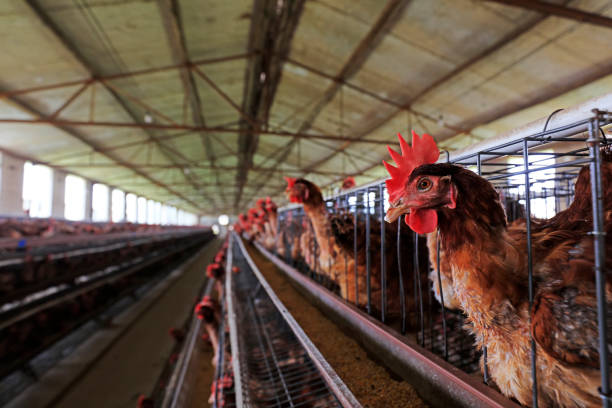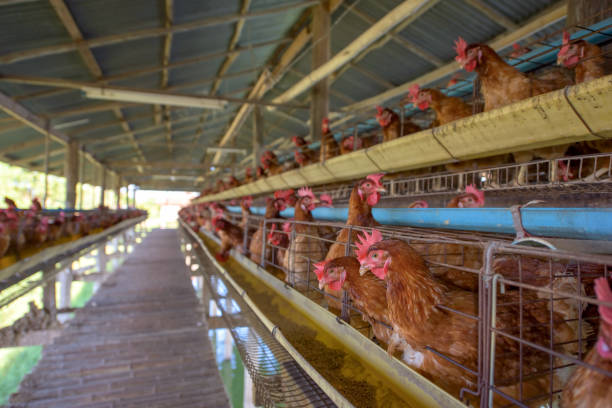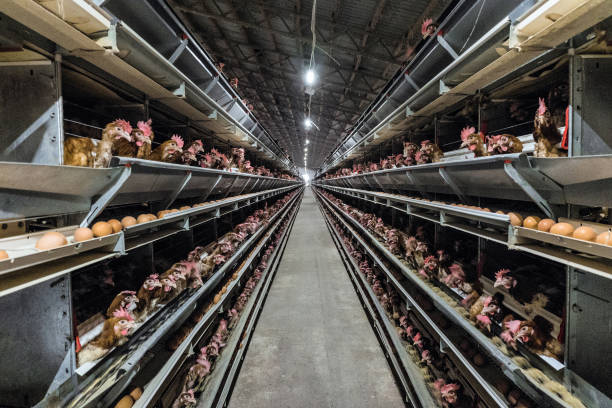
Choosing the best automatic feeding system for your poultry cages
Choosing the Best Automatic Feeding System for Your Poultry Cages
When it comes to modern poultry farming, efficiency and consistency are key to success. Whether you’re raising egg-laying hens or broilers, managing feed supply effectively can make a huge difference in productivity and profitability. One of the best investments you can make in your poultry operation is a high-quality automatic feeding system. But with so many options on the market, it’s crucial to understand what factors to consider when choosing the best system for your poultry cages.
Why Automation Matters
Before diving into the selection process, it’s important to recognize the benefits of an automated feeding system. Manual feeding methods come with a host of challenges—labor intensity, inconsistent delivery, feed wastage, and the potential for cross-contamination between birds. Automation streamlines the feeding process, ensuring birds receive the right amount of feed at the right time, every time. This leads to healthier birds, higher egg production in laying hens, improved weight gain in broilers, and a significant reduction in labor costs.
Key Factors to Consider
When evaluating automatic feeding systems, it’s not just about picking the one with the most features or the flashiest design. The goal is to find a system that seamlessly integrates with your operations and maximizes return on investment.
Type of Poultry Operation
The first step in choosing an automatic feeding system is identifying the type of poultry you’re raising. Egg-laying hens and broiler chickens have different nutritional and feeding requirements, which can influence the type of feeder system you’ll need.
Laying Hens: These birds require a steady and measured supply of feed throughout the day to maintain consistent egg production. Feed systems must also be designed to reduce feed competition and promote uniformity across the flock.
Broiler Chickens: Broilers grow rapidly and need a continuous supply of feed at various stages of growth. The system must allow for easy adjustments in feed delivery rates as the birds mature.
Your cage setup—whether you’re using conventional layer cages, enriched colony systems, or broiler pens—will also influence the choice of feeding system.
Feeder Design and Layout
There are several types of automatic feeding systems commonly used in poultry farming:
Chain and Pan Feeders: Chains move feed from a central silo to individual feeding pans placed under each row of cages. This system is highly efficient for laying hens.
Auger (Screw) Feeders: A long tube with a helical screw rotates, pushing feed to feeders spread out over the bird pens. Common in broiler systems.
Belt Feeders: These use a flat belt to move feed along the length of the house, delivering it to feeding trays or directly into the litter area. Good for floor-raised poultry.
Paddle or Chain and Tube Feeders: Often used in cage-free systems, this design involves a rotating chain with paddles or flights that push feed along a tube.
Each of these has its pros and cons. For example, chain and pan systems are ideal for layer cages since they reduce waste and ensure even feed distribution, while broiler operations often fare better with auger systems due to the ease of cleaning and scalability.
Material Quality and Durability
An automatic feeding system is a long-term investment, so you’ll want to choose one made from high-quality, durable materials. Stainless steel or galvanized metal components resist corrosion, especially in humid environments. Plastics used in feeders should be UV-resistant and impact-resistant to withstand pecking and mechanical wear.
Durability also affects maintenance. A well-constructed system will require less frequent repairs and replacements, reducing long-term operational disruptions.
Ease of Installation and Integration
You should assess how easily the system integrates with your existing poultry house design. Some feeding systems can be retrofitted into older houses, while others are better suited for new builds. Compatibility with ventilation, lighting, and manure removal systems is crucial to ensure smooth operations.
Consultation with an experienced supplier or agricultural engineer can help in choosing a system designed for your specific housing layout. The installation process should be straightforward, with minimal downtime for your birds.
Feed Efficiency and Waste Control
Minimizing feed waste is one of the primary benefits of an automated system. Feed losses in poultry operations can be significant, sometimes reaching up to 10% of total feed costs. Look for feeders that offer precise portion control, adjustable feeders to accommodate bird size at different growth stages, and designs that prevent spillage and excessive pecking.
Feed distribution should also be uniform across the house. Systems with uneven feed delivery can lead to competition among birds and uneven growth or production.
Automation Level and Control Options
Modern feeding systems come with various levels of automation. At minimum, a system should allow for programmable feed schedules to align with natural feeding behaviors and growth stages. More advanced systems can be linked to central control panels or even mobile apps for remote monitoring and adjustment.
Some systems offer smart features like:
Real-time feed consumption tracking

Alerts for blockages or mechanical failures
Data integration with other farm management systems
If you’re running a large-scale operation or planning to expand, investing in a more intelligent, fully-automated system can provide long-term benefits in efficiency and scalability.
Maintenance and Cleanability
Regular maintenance and thorough cleaning are essential for disease prevention and prolonged system life. Some feeding systems are easier to clean than others—removable components and accessible design features can greatly simplify cleaning processes.

Systems with enclosed feed tubes or chains are generally easier to clean and more resistant to pests or contamination. Ensure that the chosen system allows for regular inspection and servicing without needing to dismantle large portions of your poultry house.
Labor and Energy Requirements

Automated feeders reduce manual labor demands significantly, but some systems may require more operator interaction than others. For example, an auger system might need frequent checking for blockages, while a chain and pan system may require periodic lubrication of moving parts.
Energy consumption can also vary depending on the system. Some feeders run on electric motors, while others might require a combination of electricity and manual override. Always inquire about the power requirements and expected wear-and-tear to estimate operating costs.
Scalability and Future Expansion
Whether you’re currently managing a small farm or running a large commercial operation, consider the scalability of your feeding system. Modular systems that allow for easy expansion are ideal for those planning to scale up in the future. A system that can grow with your operation saves money and reduces the need for re-investment later.
After-Sales Support and Service Availability
Lastly, don’t overlook the importance of after-sales service. Choose a supplier with a solid reputation for customer support, warranty coverage, and readily available spare parts. Regular technical support and field visits by qualified technicians are a major plus, especially in regions where local expertise may be limited.
Reputable manufacturers like Livi Machinery don’t just sell equipment—they work with farmers to ensure systems are set up for optimal performance and maintained over time.
